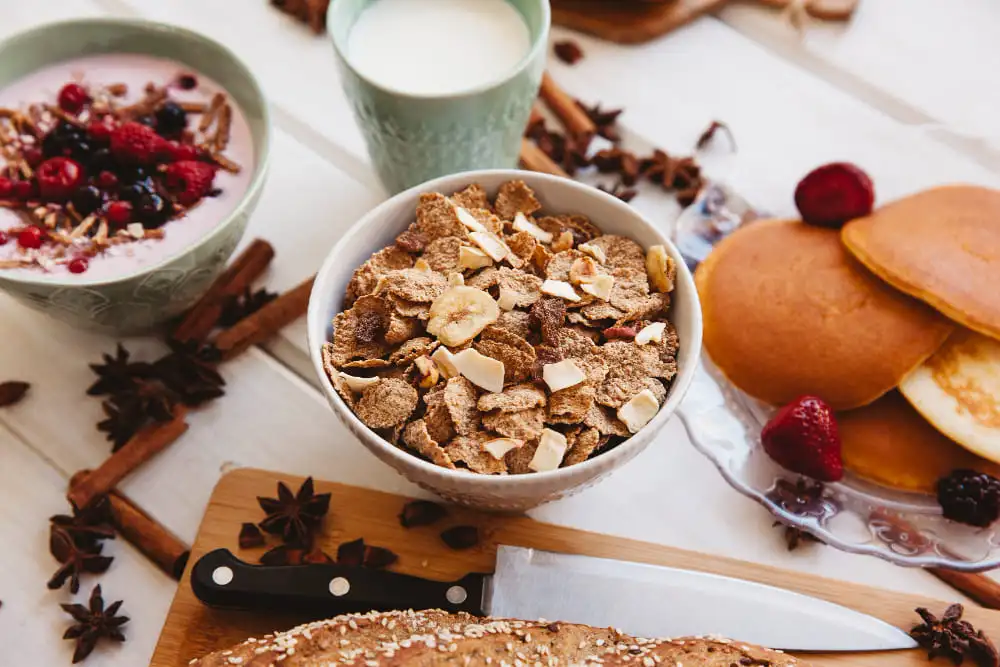Cereals and Their Preparation
Cereals are a staple food in many households worldwide, offering a nutritious and versatile option for breakfast and beyond. From oats to rice to corn, cereals come in various forms and can be prepared in numerous ways to suit different tastes and dietary preferences. In this guide, we’ll delve into the world of cereals, exploring their nutritional benefits, different types, and how to prepare them deliciously.
Understanding Cereals: Types and Nutrition
Cereals are grains cultivated for their edible components, primarily the seeds or grains. They are rich in carbohydrates, providing a valuable source of energy for the body. Additionally, many cereals contain essential nutrients such as fiber, vitamins, and minerals.
Whole Grains: Whole grains, such as oats, quinoa, and brown rice, retain all parts of the grain, including the bran, germ, and endosperm. This makes them rich in fiber, which aids digestion and helps maintain a healthy gut.
Refined Grains: Refined grains, like white rice and white flour, have had the bran and germ removed during processing, stripping away some of their fiber and nutrients. While they still provide energy, they are not as nutritious as whole grains.
Pseudo-Cereals: Pseudo-cereals, such as buckwheat and amaranth, are seeds that are prepared and consumed similarly to cereals. They are gluten-free and offer unique nutritional benefits, including high protein content and essential amino acids.
Benefits of Including Cereals in Your Diet
Incorporating cereals into your diet offers numerous health benefits:
Provides Energy: Cereals are an excellent source of carbohydrates, providing the energy needed to fuel your daily activities.
Supports Digestive Health: Whole grains are rich in fiber, which aids digestion, prevents constipation, and promotes a healthy gut microbiome.
Helps Manage Weight: The fiber content in cereals helps you feel full and satisfied, reducing the likelihood of overeating and supporting weight management efforts.
Rich in Nutrients: Cereals contain essential vitamins and minerals, such as B vitamins, iron, and magnesium, which are vital for overall health and well-being.
Preparing Cereals: Delicious and Nutritious Options
Now, let’s explore some popular cereals and how to prepare them:
Oats: Oats are a versatile and nutritious cereal that can be enjoyed in various forms. To prepare oatmeal, simply combine oats with water or milk and cook until creamy. Add your favorite toppings, such as fruits, nuts, or honey, for extra flavor and nutrition. Overnight oats are another convenient option, requiring no cooking – just mix oats with yogurt and refrigerate overnight for a tasty, no-fuss breakfast.
Rice: Rice is a staple cereal in many cuisines around the world. To cook rice, rinse it under cold water to remove excess starch, then add it to a pot with water or broth. Bring to a boil, then reduce the heat and simmer until the rice is tender and fluffy. Serve alongside your favorite curries, stir-fries, or stews for a satisfying meal.
Quinoa: Quinoa is a nutrient-dense pseudo-cereal that is gluten-free and high in protein. To cook quinoa, rinse it thoroughly to remove any bitterness, then combine with water or broth in a saucepan. Bring to a boil, then reduce the heat and simmer until the quinoa is tender and the liquid is absorbed. Use quinoa as a base for salads, soups, or as a side dish with grilled vegetables.
Corn: Corn is a versatile cereal that can be enjoyed fresh, dried, or as flour. To prepare cornmeal, simply grind dried corn kernels into a fine powder using a food processor or grain mill. Cornmeal can be used to make polenta, cornbread, or as a coating for fried foods.
Transitioning to a Healthy Lifestyle with Cereals
Transitioning to a healthier lifestyle often involves making small changes to your diet, and incorporating more cereals is a great place to start. Here are some tips for incorporating cereals into your meals:
Start Your Day Right: Begin your day with a nutritious breakfast featuring whole grain cereals, such as oatmeal or whole grain toast. Adding protein-rich toppings like nuts or yogurt can help keep you full until lunchtime.
Experiment with Different Varieties: Don’t be afraid to try new cereals and grains. Experiment with quinoa, barley, or millet to add variety to your meals and discover new flavors and textures.
Make Healthy Swaps: Replace refined grains with whole grains whenever possible. Choose whole grain bread, pasta, and rice to boost your fiber intake and improve overall nutrition.
Snack Smart: Keep healthy cereal-based snacks on hand for when hunger strikes between meals. Whole grain crackers, popcorn, or homemade granola bars are nutritious options that can satisfy your cravings.
Conclusion
Cereals are a versatile and nutritious addition to any diet, offering a wide range of health benefits and culinary possibilities. Whether you prefer oatmeal for breakfast, quinoa salad for lunch, or rice pilaf for dinner, there are endless ways to enjoy the goodness of cereals. By understanding the different types of cereals, their nutritional benefits, and how to prepare them deliciously, you can make informed choices that support your health and well-being. So, why not start exploring the world of cereals today and reap the rewards of a nutritious and delicious diet









